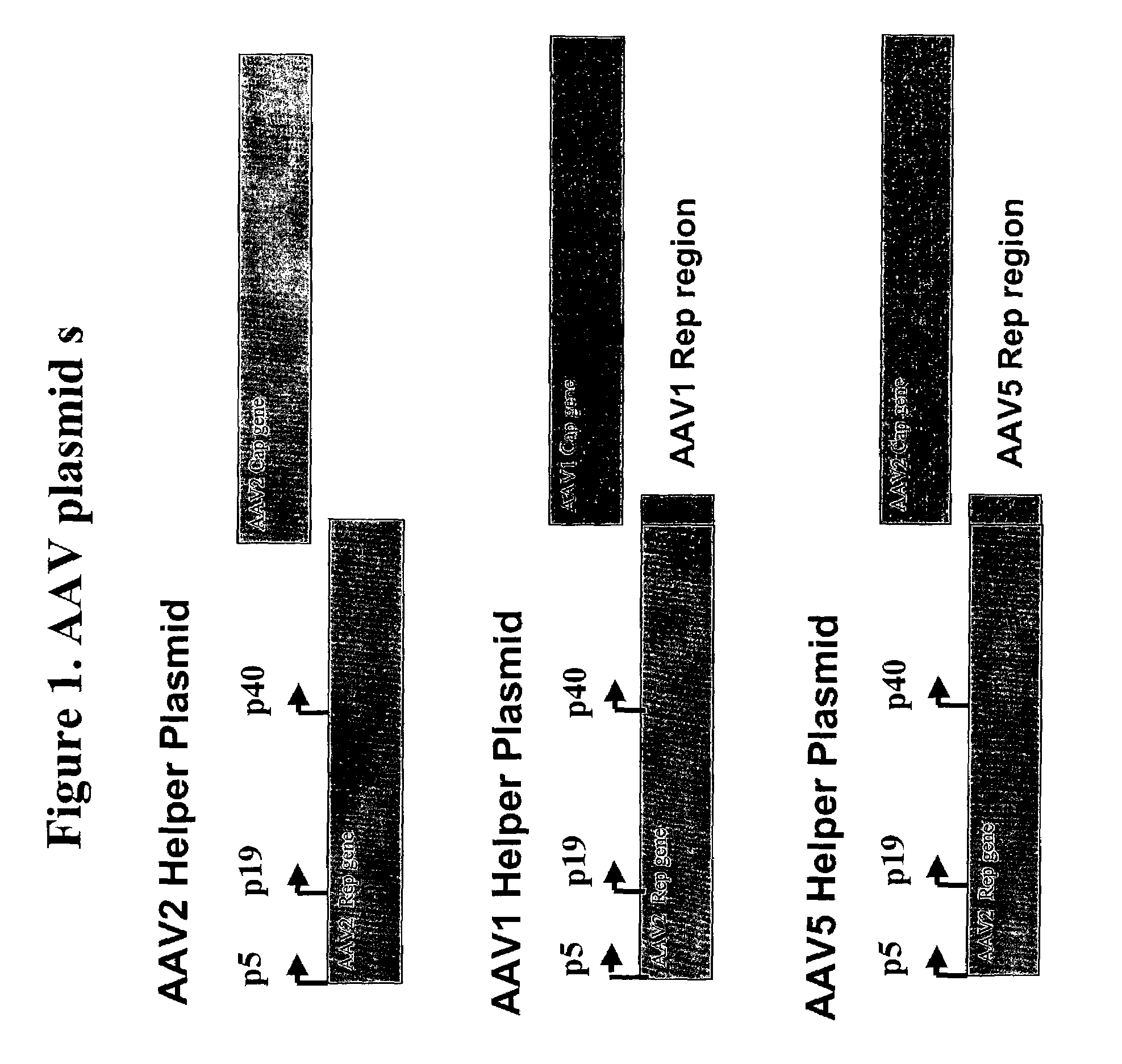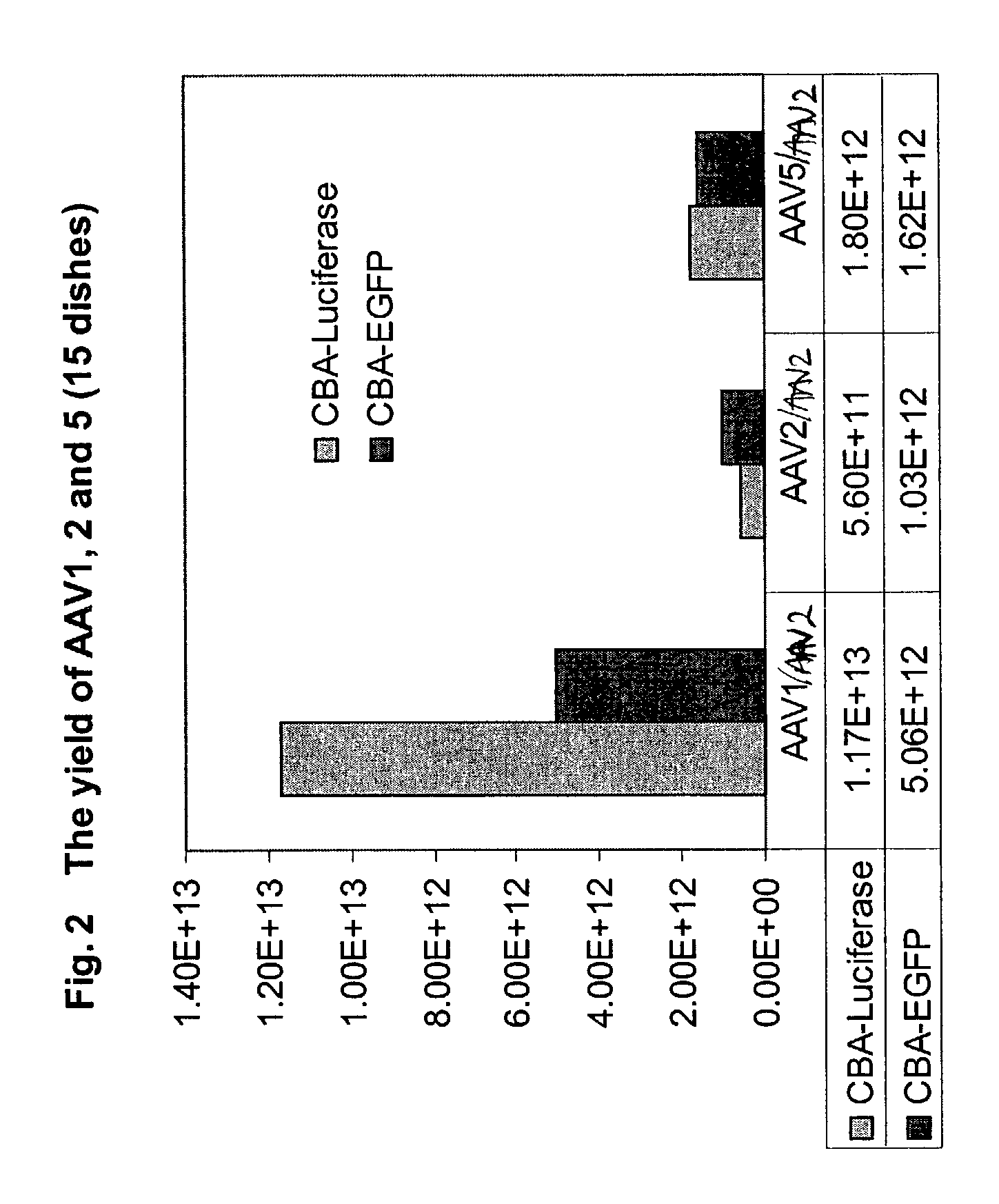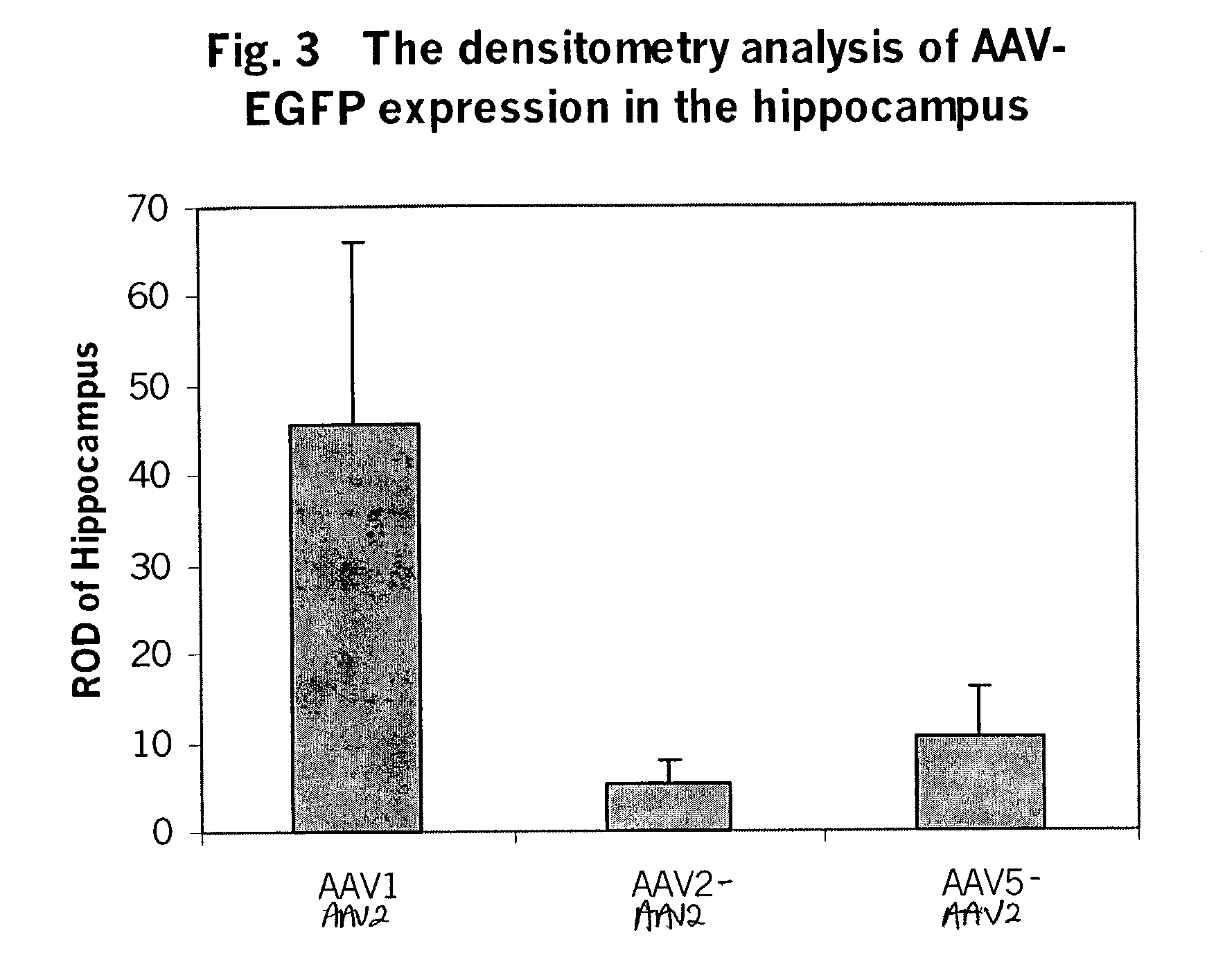High transgene expression of a pseudotyped adeno-associated virus type
a pseudotyped adeno-associated virus, high-transgene expression technology, applied in the field of recombinant viral vectors, can solve the problems of reducing the likelihood of insertional mutagenesis, requiring additional steps, and limiting its us
- Summary
- Abstract
- Description
- Claims
- Application Information
AI Technical Summary
Benefits of technology
Problems solved by technology
Method used
Image
Examples
example 1
Construction of Pseudotyped Adeno-Associated Helper Plasmids
[0155]The pseudotyped adeno-associated helper plasmids for AAV1 and AAV5 are shown in FIG. 1. These pseudotyped helper plasmids were constructed using an AAV2 helper plasmid, referred to as p5E18 (Xiao, et al (1998). J. Virol. 72:10222-10226 & Xiao, et al, (1999) J. Virol. 73:3994-4003), as the backbone, and replacing its AAV2 capsid gene with either an AAV1 or AAV5 capsid gene. The primer nucleotide sequences used to generate the psueodtyped AAV vectors are based on AAV1 (Genbank accession no:gi:9632547), AAV2 (Genbank accession no: gi:9626146), and AAV5 (Genbank accession no: gi:4249656).
[0156]The AAV2 rep region (partial) was amplified using forward primer 5′-CGAGTCAGTTGCGCAGCCATCGACGTCAGA-3′ (SEQ ID NO: 7) which corresponded with nucleotide positions 1847-1876 in the AAV2 genome and reverse primer 5′-CTGGAAGATAACCATCGGCAGCCATACCTGATTTAAATCATTTATTGTTC-3′ (SEQ ID NO: 8) which correspond with nucleotide positions 2178-2202...
example 2
Construction of Pseudotyped Vectors
[0161]To test the packaging of the virus using the pseudotyped helper plasmids, expression cassettes containing detectable markers were generated. Enhanced green fluorecent protein (EGFP) and luciferase were used as markers. The CBA-EGFP-WPRE-BGH poly A vector was constructed by cloning the enhanced green fluorecent protein (EGFP) into an AAVs genome plasmid under the control of a chicken beta actin (CBA) promoter followed by a woodchuck post-regulatory element (WPRE), with a bovine growth hormone (bGH) polyadenylation site between the two AAV2 inverted terminal repeat sequences, as previously described (During et al. (1998) Nature Med. 4:1131-1135). The CBA-luciferase-WPRE-BGH poly A vector was constructed by cloning the luciferase gene into the AAV plasmid under the control of a chicken beta actin (CBA) promoter followed by a woodchuck post-regulatory element (WPRE), with a bovine growth hormone (bGH) polyadenylation site between the two AAV2 inv...
example 3
In-vitro Infectivity of the Pseudotyped Vectors
[0163]To test the in-vitro infectivity of the recombinant pseudotyped vectors, and to determine whether the AAV helpers supported recombinant AAV production, the pseudotyped helper constructs described in Example 1 were cotransfected into 293 cells, along with the CBA-EGFP-WPRE-BGH poly A and CBA-luciferase-WPRE-BGH poly A vectors described in Example 2, and an adeno helper plasmid at a ratio of 1:1:2, using calcium phosphate precipitation methods in a triple transfection. Cells were incubated at 37° C. for 72-96 hours post transfection. After incubation, the cells were harvested and the viruses purified by double CsCl gradient. The vector yield was determined by measuring the GFP and luciferase expression in 293 cells using cell lysate from the above preparation. At MOIs of 10-1000, robust expression was seen with the recombinant pseudotyped viruses.
[0164]The yields of the different serotypes are shown in the FIG. 2. From 15 dishes of ...
PUM
| Property | Measurement | Unit |
|---|---|---|
| diameter | aaaaa | aaaaa |
| diameter | aaaaa | aaaaa |
| length | aaaaa | aaaaa |
Abstract
Description
Claims
Application Information
 Login to View More
Login to View More - R&D
- Intellectual Property
- Life Sciences
- Materials
- Tech Scout
- Unparalleled Data Quality
- Higher Quality Content
- 60% Fewer Hallucinations
Browse by: Latest US Patents, China's latest patents, Technical Efficacy Thesaurus, Application Domain, Technology Topic, Popular Technical Reports.
© 2025 PatSnap. All rights reserved.Legal|Privacy policy|Modern Slavery Act Transparency Statement|Sitemap|About US| Contact US: help@patsnap.com



